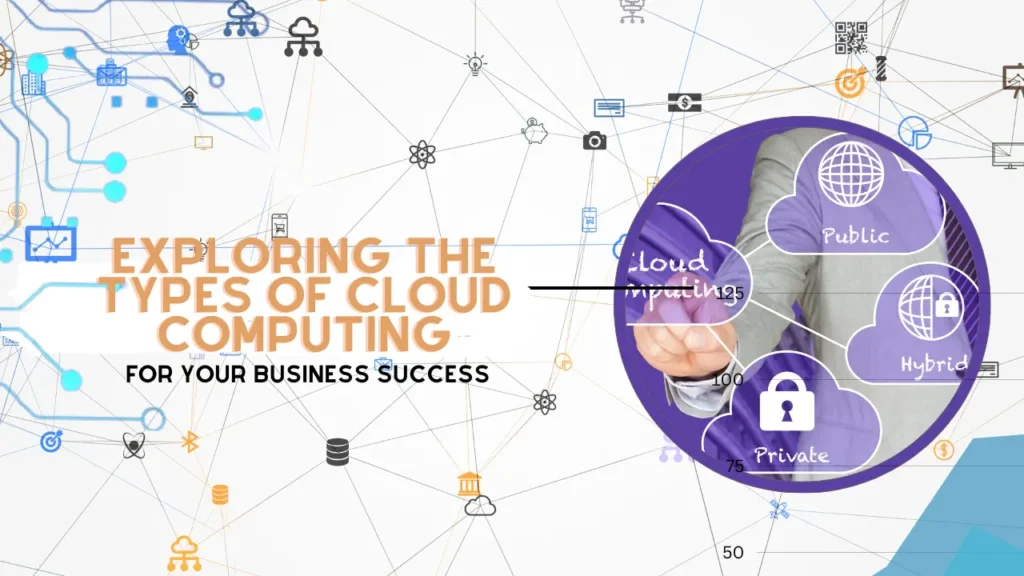Types of Cloud Computing
Following are the various types of cloud computing:
Public Cloud
The public cloud is the most common type of cloud computing. It is owned and operated by third-party service providers who offer resources, such as storage and computing power, to multiple users over the Internet. Examples of public cloud providers include Amazon Web Services (AWS), Microsoft Azure, and Google Cloud Platform.
Advantages of Public Cloud:
- Cost-Effective: Public cloud services operate on a pay-as-you-go model, allowing businesses to only pay for the resources they use, leading to cost savings.
- Scalability: Public cloud services can quickly scale resources up or down based on demand, ensuring flexibility and agility.
- Accessibility: Public cloud services can be accessed from anywhere with an internet connection, enabling remote work and collaboration.
- Reliability: Public cloud providers offer robust infrastructure with high uptime and reliability, backed by service-level agreements (SLAs).
- Innovation: Public clouds often provide a wide range of cutting-edge services and technologies, allowing businesses to leverage advanced capabilities without significant investment.
Disadvantages of the Public Cloud:
- Security Concerns: As public cloud resources are shared among multiple users, there may be concerns about data security and privacy. However, public cloud providers implement stringent security measures to address these concerns.
- Limited Control: Users have limited control over the public cloud’s underlying infrastructure and data management.
- Dependency on Service Provider: Organizations rely on the service provider’s infrastructure and must ensure they choose a reputable and reliable provider.
Private Cloud
A private cloud is dedicated to a single organization and can be hosted on-site or by a third-party provider. It offers enhanced security, control, and customization options. Private clouds suit organizations with strict compliance requirements, sensitive data, or specific performance needs.
Advantages of Private Cloud:
- Enhanced Security: Private clouds provide more control and security over data and infrastructure. Organizations can implement their security measures and comply with industry regulations.
- Customization: Private clouds allow organizations to tailor the infrastructure and services to their specific needs and requirements.
- Greater Control: Organizations have more control over the resources, performance, and data management in a private cloud environment.
Disadvantages of Private Cloud:
- Higher Costs: Setting up and maintaining a private cloud can be more expensive than public cloud options, requiring dedicated infrastructure and Expertise.
- Limited Scalability: Private clouds have limited scalability compared to public clouds, as resources are confined to the organization’s infrastructure.
- Maintenance and Management: Organizations are responsible for maintaining, managing, and updating the private cloud infrastructure.
Hybrid Cloud
The hybrid cloud combines elements of both public and private clouds, allowing organizations to leverage the benefits of both models. It provides the flexibility to use public cloud services for non-sensitive data or to handle fluctuating
workloads while keeping critical data and applications on a private cloud for added security.
Advantages of Hybrid Cloud:
- Flexibility: Hybrid cloud allows organizations to take advantage of the scalability and cost-effectiveness of public clouds while maintaining control over sensitive data in a private cloud environment.
- Security and Compliance: Organizations can keep critical or sensitive data in a private cloud, ensuring compliance with regulatory requirements and data governance policies.
- Cost Optimization: Hybrid cloud enables businesses to optimize costs by utilizing public cloud resources for non-sensitive workloads, reducing the need for additional private cloud infrastructure.
Disadvantages of Hybrid Cloud:
- Complexity: Integrating and managing public and private cloud environments can be complex and require cloud architecture and integration expertise.
- Data and Application Mobility: Ensuring seamless movement of data and applications between public and private clouds can present challenges and require careful planning.
Community Cloud
A community cloud is a shared infrastructure that caters to a specific community or industry with similar security and compliance requirements. It allows multiple organizations to pool resources and costs while maintaining their specific needs. Examples of community clouds include government clouds and healthcare clouds.
Advantages of Community Cloud:
- Cost Sharing: Community cloud allows organizations to share the costs of infrastructure, maintenance, and management, leading to cost savings.
- Collaboration: Participants in a community cloud can share data, applications, and services, facilitating collaboration and knowledge sharing within the community.
- Compliance: Community clouds can be designed to meet specific regulatory requirements and industry or community compliance standards.
Disadvantages of Community Cloud:
- Limited Scope: Community clouds cater to specific communities or industries, which may limit their suitability for organizations outside those communities.
- Dependency on Community: Organizations relying on community cloud services may need more control over infrastructure and service-level agreements, as they depend on the community cloud provider.
Types of Cloud Services
Infrastructure as a Service (IaaS)
IaaS offers virtualized computing resources over the Internet, providing the building blocks for IT infrastructure. Users control the operating systems, applications, and data, while the cloud provider manages the underlying infrastructure. Examples of IaaS include Amazon Web Services (AWS) EC2 and Microsoft Azure Virtual Machines.
Advantages:
- Scalability: Easily scale resources up or down based on demand.
- Cost Savings: Eliminate the need for upfront hardware investments.
- Flexibility: Customize and configure the infrastructure to meet specific requirements.
Disadvantages:
- Technical Expertise Required: Users need knowledge and skills to manage and maintain the infrastructure.
- Responsibility for Security: Users are responsible for securing their applications and data within the provided infrastructure.
Platform as a Service (PaaS)
PaaS offers a platform for developers to build, deploy, and manage applications without worrying about the underlying infrastructure. It provides a complete development and deployment environment. Examples of PaaS include Google App Engine and Heroku.
Advantages:
- Streamlined Development: Developers can focus on coding, reducing time-to-market.
- Scalability: Automatically scale applications based on demand.
- Reduced Maintenance: The cloud provider manages the underlying infrastructure and handles updates and patches.
Disadvantages:
- Limited Control: Users have less control over the underlying infrastructure and may face restrictions on customization.
- Vendor Lock-In: Moving applications between different PaaS providers can be challenging.
Software as a Service (SaaS)
SaaS delivers software applications over the Internet, allowing users to access and use them through web browsers without installation or maintenance. Examples of SaaS include Salesforce, Google Workspace, and Microsoft Office 365.
Advantages:
- Easy Accessibility: Access applications from any device with an internet connection.
- Seamless Updates: The cloud provider handles software updates and maintenance.
- Scalability: SaaS applications can scale to accommodate varying user demands.
Disadvantages:
- Limited Customization: Users may have limited control over the functionality and customization options.
- Data Security: Entrusting sensitive data to a third-party provider requires careful consideration of security measures and compliance.
Function as a Service (FaaS)
FaaS, also known as serverless computing, allows developers to focus solely on writing and deploying functions without managing the underlying infrastructure. The cloud provider takes care of resource allocation and scaling. Examples of FaaS include AWS Lambda and Microsoft Azure Functions.
Advantages:
- Cost Efficiency: Users pay only for the actual execution time of functions.
- Scalability: Automatically scale functions based on incoming requests.
- Simplified Development: Developers can focus on writing code without infrastructure management.
Disadvantages:
- Function Execution Limits: Functions have a maximum execution time and memory limitations.
- Vendor-Specific Implementations: Portability between different FaaS providers may require modifications.
Choosing the right cloud computing and service model type depends on specific needs, considering security, control, scalability, customization, and cost factors. By understanding the advantages and disadvantages of each type, organizations can make informed decisions to leverage the benefits of cloud computing effectively.



